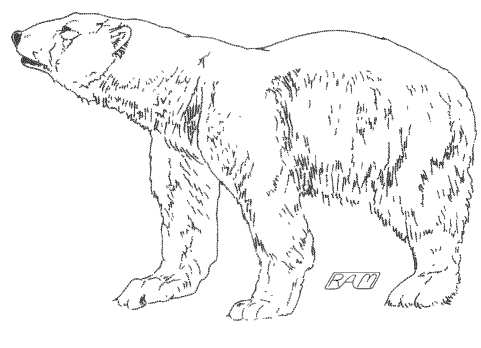Giants: Polar Bear (Ursus maritimus)
Maximum Length = 8.2 feet (2.5 metres)
Maximum Weight = 1,800 pounds (800 kilograms)

The largest terrestrial predator, the Polar Bear is found only in the circum-polar Arctic. A full-grown male can stand 11 feet (3.3 metres) tall on its hind legs and weigh nearly a ton (tonne); females are smaller. In their harsh habitat, Polar Bears are kept warm by a thick layer of subcutaneous fat and a thick, white coat of hair. The Polar Bear's skin is black and its guard hairs hollow, which serve to trap solar heat and hold it close to the body. The fur of a Polar Bear is often stained yellowish by the presence of algae that grow within the tube-like hairs. Polar Bears feed primarily on seals, particularly the Ringed Seal (Phoca hispida), which are captured as they surface at a breathing hole and from which the bears preferentially strip the high-calorie blubber. Polar Bears also eat fish, birds, and even garbage when they encounter human habitation. They are considered highly dangerous to humans and many unprovoked attacks have been recorded. Pregnant Polar Bears den up in the winter, giving birth to 1 or 2 cubs about a year later. Immature Polar Bears remain with their mothers for up to two years and avoid the males, which often kill the cubs. Polar Bears are long-distance roamers and can out-run a Reindeer (Rangifer tarandus) or a man on land. They are also powerful swimmers, having been found more than 30 miles (50 kilometres) from land. Polar Bears have no natural enemies except for man.
